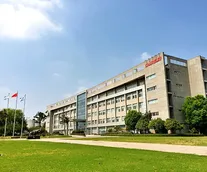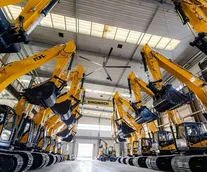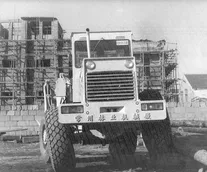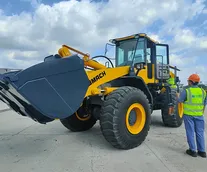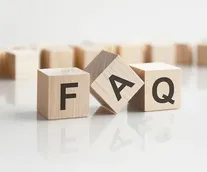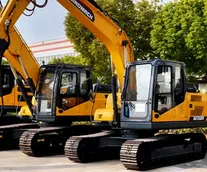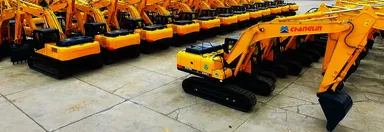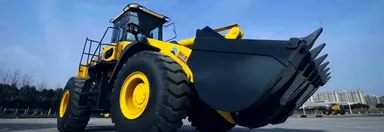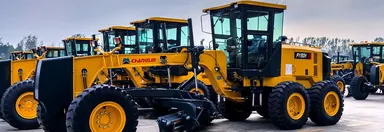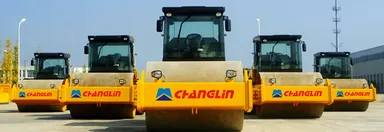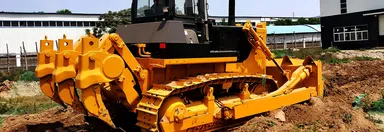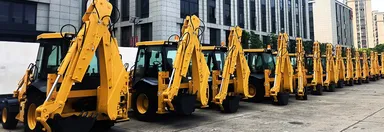About Us
Are you the original manufacturer of the construction equipment you offer?
Are you the original manufacturer of the construction equipment you offer?
Yes, we operate our own factory with over 60 years of manufacturing experience. In the 1990s, we established joint ventures with leading Japanese and Korean brands, becoming one of the earliest Chinese companies to integrate international technology.
What payment methods do you accept?
What payment methods do you accept?
We support various payment options depending on the region and order type, including T/T (bank transfer), L/C (letter of credit), D/P, D/A, and Western Union.
What trade terms do you work with?
What trade terms do you work with?
We commonly use FOB, CFR, CIF, and EXW terms. Other options can be discussed
based on your shipping needs.
How long does delivery usually take?
How long does delivery usually take?
Lead time typically ranges from 7 to 30 days after receiving the deposit, depending on equipment availability and order quantity.
What’s the warranty period for your machines?
What’s the warranty period for your machines?
Our standard warranty covers 15 months after shipment or 2,000 working hours, whichever comes first.
What certifications do your machines have?
What certifications do your machines have?
Our equipment can be certified with CE, ISO, GOST, EPA (for the U.S.), and CCC, depending on the market.
Do you offer OEM or ODM services?
Do you offer OEM or ODM services?
Yes, we support OEM and ODM orders, including product customization such as special attachments, colors, or branding based on your requirements.
Do you provide remote technical support?
Do you provide remote technical support?
Absolutely. Our digital service team offers online assistance through video calls, real-time troubleshooting, and step-by-step repair guides, available 24/7.
About Our Products
What attachments are compatible with your excavators?
What attachments are compatible with your excavators?
We offer a wide range of attachments to meet different construction needs. These most common attachments include: standard buckets for earthmoving, hydraulic breakers for rock or concrete demolition, hydraulic shears for dismantling structures, log grapples for handling timber or pipes, rippers for compacted soil or frozen ground, vibratory compactors for backfilling, augers for drilling and piling, dredging buckets for clearing silt, and quick couplers for fast tool changes. These options make our machines suitable for civil works, mining, municipal maintenance, and forestry.
What should be checked before operating an excavator?
What should be checked before operating an excavator?
Before starting the engine, check fuel, hydraulic oil, lubricant, and coolant levels. Inspect all hydraulic cylinders and lines for leaks, and ensure bolts and connections, especially on the boom and undercarriage, are tight. Lastly, scan the worksite to make sure the area is clear of obstacles and safe for operation.
How do I choose the right wheel loader?
How do I choose the right wheel loader?
Start by assessing your project’s size and material type to select the appropriate bucket capacity and operating weight. For rough terrains like mining sites, a crawler loader is often better suited, while wheel loaders work well on flat surfaces. It's also wise to choose a reputable brand with reliable after-sales support.
How often should the hydraulic oil be replaced in a wheel loader?
How often should the hydraulic oil be replaced in a wheel loader?
Hydraulic oil should typically be changed every 500 to 1000 hours, depending on working conditions. In harsher environments with high dust or moisture, it's best to shorten the interval to ensure optimal performance.
Can I add extra weight or install a longer blade on a motor grader?
Can I add extra weight or install a longer blade on a motor grader?
Yes, it’s possible to adjust the weight by adding features like a front ripper or ROPS protection. However, when considering a longer moldboard, it’s essential to match it with the grader’s overall weight and engine power to ensure safe and efficient operation based on your working environment.
How can I tell if a motor grader is suitable for the soil or terrain in my area?
How can I tell if a motor grader is suitable for the soil or terrain in my area?
To determine whether a motor grader matches the soil and terrain conditions in your region, you need to consider both the environment and the specific features of the grader. Compact models or those designed for maintenance work are ideal for grading tasks in narrow spaces, such as ditches, utility areas, or urban zones. Heavier-duty graders, on the other hand, perform better on rough or rocky surfaces. For soft, muddy, or wet ground, it’s best to choose a model equipped with features like larger tires or enhanced traction systems. These can improve stability and efficiency under difficult working conditions. Matching the motor grader’s capabilities with the local terrain ensures optimal performance and fewer delays on site.
How do compactors and road rollers adjust to different soil types?
How do compactors and road rollers adjust to different soil types?
Compactors and road rollers adapt to various soil conditions by adjusting vibration frequency and amplitude. Low frequency with high amplitude works best for cohesive soils, while granular soils respond better to high frequency and low amplitude. Advanced compactor models feature intelligent control systems that automatically optimize compaction parameters based on soil type to ensure consistent results.
How is effective compaction achieved on slopes?
How is effective compaction achieved on slopes?
To maintain consistent compaction on inclined surfaces, our compactors and road rollers are equipped with differential locks and anti-slip control systems that enhance stability. A low center of gravity and wide tires provide better traction, while intelligent systems automatically adjust compaction settings based on the slope gradient to ensure even and reliable performance.
What does “Four Wheels and One Track” mean in crawler bulldozers?
What does “Four Wheels and One Track” mean in crawler bulldozers?
In the context of crawler equipment, “Four Wheels and One Track” refers to the main components that make up the undercarriage system. These include the drive sprocket, idler, track rollers, carrier rollers, and the track itself. Together, they handle load distribution, power transmission, and directional control, ensuring the bulldozer moves steadily and safely across uneven ground.
- Drive sprocket: Delivers power from the engine to the track.
- Idler: Maintains tension and guides the track path.
- Track rollers: Support the machine’s weight and manage ground contact.
- Carrier rollers: Keep the top section of the track aligned and lifted.
- Track: The continuous loop that provides traction and movement.
What’s the difference between wetland and standard bulldozers?
What’s the difference between wetland and standard bulldozers?
Wetland bulldozers are equipped with longer, wider track shoes that reduce ground pressure—some models get it as low as 15 kPa. This makes them less likely to sink in soft terrain. They’re also fitted with lighter blades that minimize disturbance to loose or muddy ground. These design features allow them to work efficiently in swampy or marshland conditions where standard models would struggle.
What is the function of the steering pump in a backhoe loader?
What is the function of the steering pump in a backhoe loader?
The steering pump converts engine power into hydraulic pressure to drive the steering cylinders and motors. It ensures smooth, responsive control and stable operation during maneuvering, especially under load or on uneven terrain.
Can a backhoe loader be used for digging ponds or landscaping?
Can a backhoe loader be used for digging ponds or landscaping?
Absolutely, backhoe loaders are multipurpose machines ideal for small-scale tasks such as pond excavation, residential landscaping, trenching for utilities, and general site preparation in confined areas.


